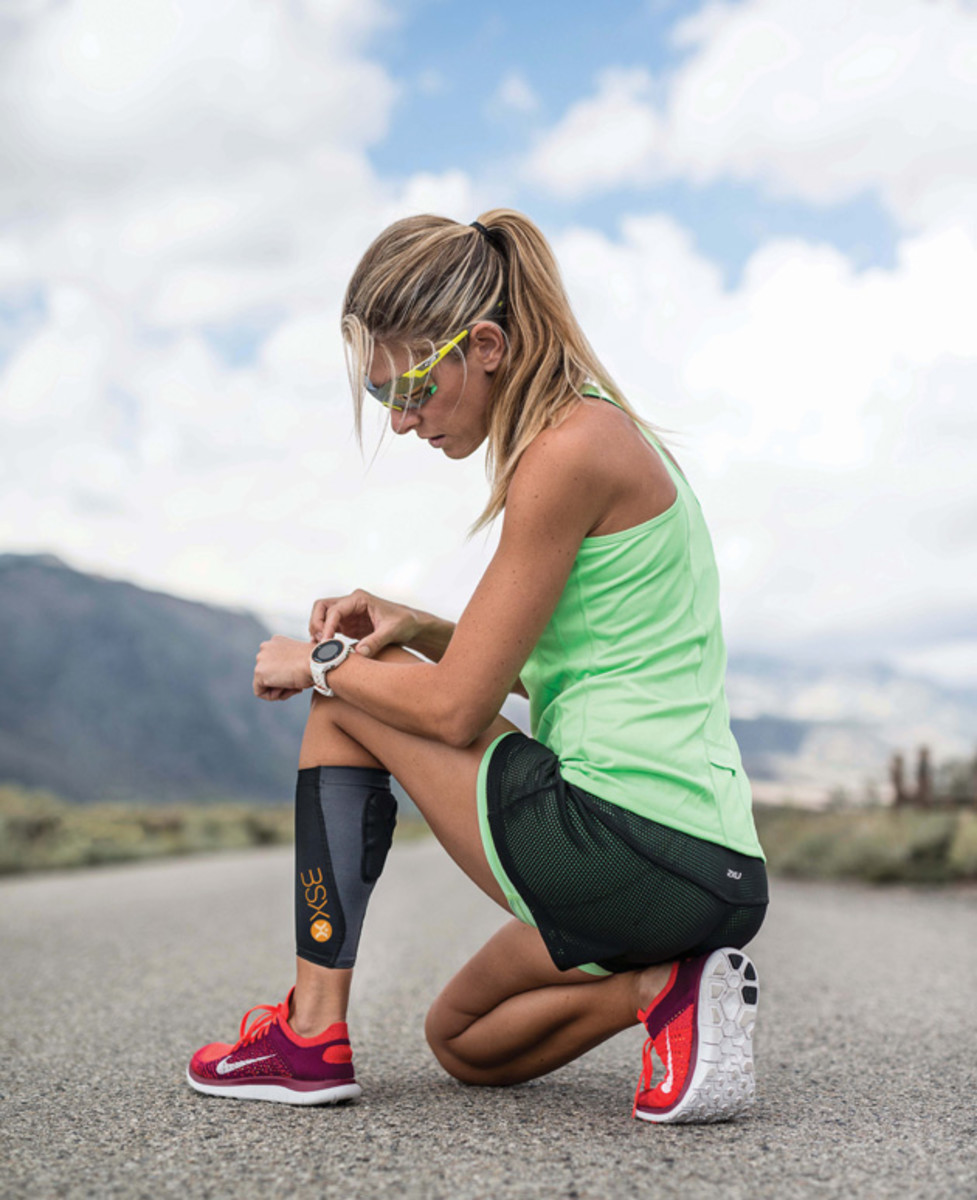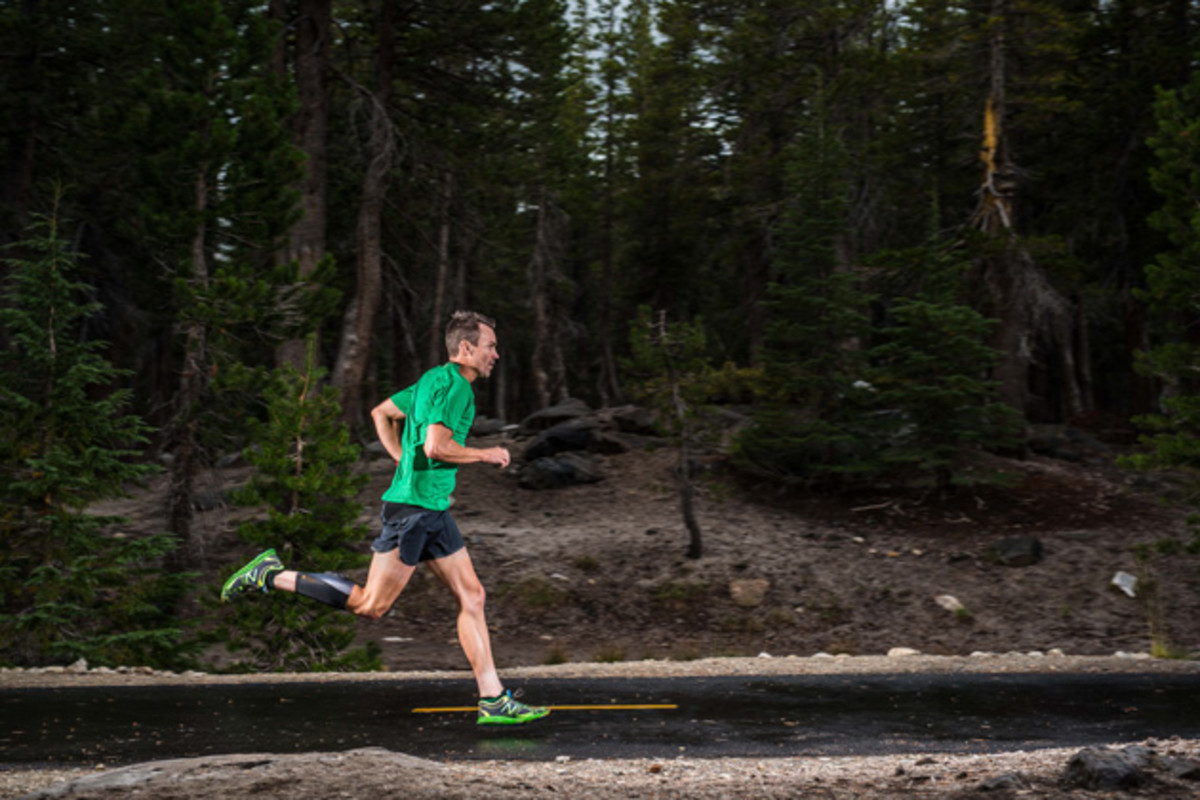BSX introduces new level of athletic analysis tracking lactate threshold

Alison Kreideweis sat nervously on the edge of a treadmill at Finish Line Physical Therapy in New York City, on Dec. 1. She’d volunteered to help demo a new wearable device that measures an athlete’s lactate threshold, but slipping on the BSX Insight was the easy part—the device, which uses near-infrared light to measure blood oxygen levels in muscle, tucks into a compression sleeve worn on the calf. BSX Athletics president Dustin Freckleton wanted to compare the old and his new lactate threshold tests side-by-side, which meant drawing her blood at three-minute intervals as she ran.
“Do nerves play any part in this?” Kreideweis asked. “Affecting test results?”
An athlete’s lactate threshold is the pace or power they can achieve before lactic acid starts to build up in their muscles. This lactic acid is produced when muscle fibers can no longer get sufficient oxygen for aerobic respiration, and must generate their energy anaerobically. The build-up causes the burn felt in muscles when exercising at high intensity, and above the lactate threshold the athlete will begin to fatigue quickly.
Knowing where this threshold lies allows endurance athletes to train more effectively by working close to this level without exceeding it, and thus tiring too quickly. With appropriate training, athletes can also push the threshold back, increasing their endurance limits.

Kreideweis co-founded Empire Tri Club with her cousin Jessica McDonald four years ago to provide training and resources to aspiring triathletes in New York City. Besides fitness coaching, she also played Division I soccer at Bucknell University and has competed in the Escape from Alcatraz and Lake Placid Ironman triathlons. But until Dec. 1 she’d never had her lactate threshold tested; that was something only pro athletes did.
Every three minutes the speed of the treadmill was increased, and every three minutes Freckleton tested Kreideweis’s blood. “This is a great example of why people who do lactate [testing] don’t go back and do it frequently,” Freckleton said, mid-way through the demonstration. While Kreideweis kept running, an assistant held her arm still against the side of the treadmill. Freckleton, wearing latex gloves, first had to clean Kreideweis’s fingertip to remove dried blood and sweat, and then prick her with a needle to draw fresh blood. The three-minute intervals were chosen so that the lactic acid generated in her leg muscles had time to filter up through her blood to her hands. As she ran, and her heart pumped blood around her body, Kreideweis had to hold a piece of gauze against her fingertip to stop the bleeding. At one point, Freckleton had to clean a few stray drops of blood off the side of the treadmill.
Lookout, Road Runner! This ASU scientist built a jetpack for running
When the test was over and she’d caught her breath, Kreideweis held up her left hand. “It was kind of brutal,” she said. Her finger was sore and bloody. A couple of hours later it was bruised and numb.
As Freckleton was drawing her blood, the BSX Insight was constantly, and non-invasively, recording the blood oxygenation levels in her left calf muscle. The device does this by projecting infrared light through the skin and then analyzing the color pattern that is reflected back—the exact color of red blood cells indicates the oxygenation. Though the BSX Insight doesn’t directly measure lactic acid, unlike the blood test, it can interpret when lactic acid would be building up by looking for significant changes in oxygenation. A decrease in blood oxygenation implies a switch from aerobic to anaerobic respiration, and thus an increase in lactic acid. Combined with pace and power determined using accelerometers and from the athlete’s pulse rate, the BSX Insight then returns a measure of the lactic threshold that, according to the company, is 95 percent accurate.

Kreideweis’s blood test results indicated that she crossed her lactate threshold when the pace was increased to from a 7:20 to a 7:00 mile, and the BSX Insight put the threshold at 6:53. Those results made sense to her. She’s never broken 20:00 for the three-mile run that is part of the Equinox indoor triathlon series.
Freckleton believes that the BSX Insight, in addition to being easier and less painful than the traditional approach to measuring lactate threshold, could eventually make knowledge of the lactate threshold redundant. “Muscle oxygenation is the future of endurance training,” he says. “It is the linchpin to the energy producing systems.” In fact, lactate threshold is really just a marker used to work out when muscle oxygenation levels begin to change significantly, and if those levels themselves are known, there is little reason to worry about anything else.
The BSX Insight comes in three different versions, for running ($299.99), for cycling ($369.99), and a multisport version for both ($419.99). It connects wirelessly to both iPhone and Android devices, and the first shipments are due out to customers toward the end of this month.
Freckleton has plans for more versions, too. “There’s a huge market for rowers,” he says, “and cross-country skiers is another one.” However, every sport is different. To ensure the device can accurately predict the lactate threshold for rowing and skiing, BSX Athletics will first need to study how human physiology responds to those sports. Which means that while runners and cyclists might now be safe, everyone else still needs to fear the needle.
